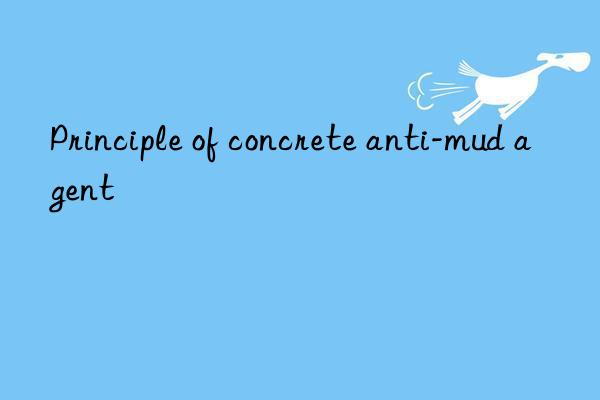
The main reason why mud powder affects concrete mixed with lignosulfonate and naphthalene-based superplasticizer is the adsorption competition between mud powder and concrete. There is still no consistent explanation about the mechanism of action of mud powder and polycarboxylate water-reducing agent. A small number of scientists believe that the mechanism of action of mud powder and water-reducing agent is similar to that of concrete. Water-reducing agent uses anionic groups to adsorb to the surface of concrete or mud powder. The difference is the amount of water-reducing agent adsorbed by mud powder. Concrete is inversely proportional to its adsorption speed. At the same time, the higher density and isotropic structure of clay minerals also absorb more water and reduce the free water in the slurry, which directly affects the decorative properties of the concrete. Wang Ziming and others found that kaolin and bentonite have obvious adsorption effects on polycarboxylic acid superplasticizers, and the adsorption is initially balanced.
Li Anguang and others found that in an alkaline environment similar to saturated lime water, the mud adsorbed the polycarboxylic acid-based water-reducing agent rapidly, and the mud had already exceeded the saturated adsorption capacity within 6 minutes. , the adsorption capacity is about 4 times that of concrete. Wu Hao et al. emphasized that the properties of polycarboxylate superplasticizers are affected in mud-containing concrete mainly because the adsorption of PC by mud causes a reduction in the use rate of PC in the company's concrete volume, and the adsorption of oxygen molecules by soil inorganic salts causes swimming. The moving water decreases, and the interaction between the two causes the slurry circulation performance to become worse. Ma Baoguo et al. found that the adsorption capacity of polycarboxylate superplasticizer by mud exceeds that of concrete and continues to increase with time, decreases with rising temperature, and finally exceeds equilibrium, with a saturated adsorption capacity of 10.1 mg/g, which may increase the adsorption capacity of concrete. About 3 times, the adsorption is basically consistent with Langmuri isothermal adsorption modeling. Xu Wenbing and others found that changes in the MB value of machine-made sand (which measures the adsorption value of methylene blue by limestone powder and mud powder infiltrated into limestone powder) have a good correlation with changes in the moisture content of the mud powder. A small number of scientists have also shown that the PEO structure is very easy to insert between the aluminosilicate layers of clay.
Moreover, different types of polycarboxylic acid-based water-reducing agents with PEO side chain structures are very sensitive to mud. Therefore, they believe that the main reason why polycarboxylic acid-based water-reducing agents are more sensitive to mud is This is because some clay minerals in the mud are suitable for intercalation in the PEO side chain structure of polycarboxylic acid-based water-reducing agents. As a result, most polycarboxylic acid-based water-reducing agents are intercalated into clay sheets through biological adsorption. In the middle of the layer, it is not adsorbed to the surface layer of clay mineral organic matter by charge adsorption.
D. Manning et al. stated that the impact of montmorillonite on polycarboxylic acid-based water-reducing agents is greater than that of other clay mineral organic substances because the large crystal facet lamellar structure of montmorillonite is more beneficial. Intercalation, swelling and cation exchange. Both terms can describe some test situations, but they cannot describe all test situations. Therefore, the test certification of the left and right methodologies and the new methodologies also need to be explored in depth.
</p



 微信扫一扫打赏
微信扫一扫打赏
